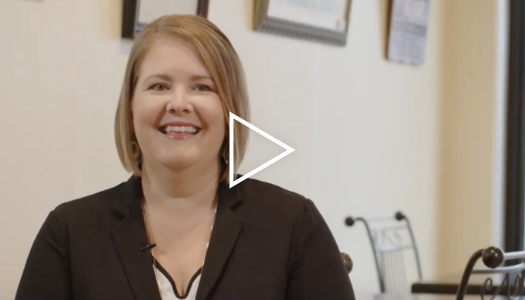Addiction is a Disease
What is Substance Use Disorder?
Commonly referred to as addiction, substance use disorder is not a behavior problem or a weakness. It’s a disease that impacts people all over our state. Neuroscientists, doctors, and other experts researching addiction all agree that it is a disease, with the American Society of Addiction Medicine categorizing it as a chronic brain disorder.
Substance Use Disorder Changes the Brain
Addiction changes the way the brain’s reward system functions, leaving people unable to control their use of illegal or legally prescribed drugs. Once this happens, it’s incredibly difficult for someone to quit using drugs, even if they may want to. As a result, living with this disease can make people feel trapped.
Substance Use Disorder is Not a Moral Issue
Addiction can begin in various ways. For some, it develops after a doctor prescribes a legal painkiller. For others, it develops after recreational use. Substance use disorder can also occur after someone experiences trauma.
No matter its onset, addiction is a disease and those living with it are suffering. Due to stigma, many people don’t understand that overcoming substance use disorder requires more than good intentions, strong willpower, or moral principles. But with the right treatment and support, recovery is possible.
SUBSTANCE USE DISORDER BY THE NUMBERS
1987
addiction is recognized is a disease by the American Medical Association1
2011
addiction is classified as a chronic brain disorder by the American Society of Addiction Medicine1
500,000
number of Hoosiers struggling with a substance use disorder (nearly one in 12 Hoosiers)2
932,000+
people have died since 1999 from a drug overdose3
Increasing Our Understanding
What You Can Do
SEE THE PERSON, NOT JUST THEIR ADDICTION
- Listen to the person in your life with substance use disorder. Hear their stories and struggles while withholding judgment and offering support.
- Treat people with substance use disorder with dignity and respect.
- Take time to learn about substance use disorder.
- Volunteer with organizations in your community that are helping spread awareness and challenge the stigma of substance use disorder.


TALK ABOUT IT
- Have you struggled with substance use disorder? Share your story.
- Start a conversation with friends and loved ones about reducing the stigma around addiction.
- Have someone in your life who has a substance use disorder? Let them know you’re here for them.
- Do you know someone whose loved one has a substance use disorder? Share resources with them (like this website) and tell them you’re available to talk if they need support as they work through all of the emotions that come with watching a loved one suffer from this disease.
CHANGE HOW YOU TALK ABOUT ADDICTION
We have to change the way we talk about addiction in order to reduce the stigma. Instead of using words like “junkie” or “hooked,” use positive language that acknowledges and honors the person’s humanity. Biased and hurtful language can keep someone from seeking treatment. Changing the way we talk can make a big difference.


DID YOU KNOW?
74% of Hoosiers believe substance use disorder is common in their community, but 56% of Hoosiers say they don’t personally know anyone who has the disorder4. Despite our cultural perceptions, substance use disorder can happen anywhere and you likely do know someone who struggles with it. With so many communities affected by addiction, it shouldn’t be taboo to talk about. Let’s end the stigma.
"Every person has value. But because of the stigma, they can’t be honest about their lives or what has happened to them. These are our friends and family, this is someone I went to high school with, this is my aunt, this is my child. Regardless of what they’ve done, we need to make sure we’re there for them when they’re ready to come back and be part of this community.”
– Sayward, Recovery Treatment Provider
Many of the photos included on this webpage are original photography featuring paid actors. These photos do not represent individuals who have substance use disorders or are living in recovery. The exception to this are photos of people who are named and share their personal stories about substance use disorder. We are grateful for these individuals’ willingness to come forward to help reduce the stigma of substance use disorder and provide encouragement to those living with this chronic disease.
1. Indiana University Health. Is Addiction Really a Disease? Published November 2022.
2. Indiana University. The Crisis in Indiana: Addiction affects every aspect of Hoosier life. Publishing date not specified.
3. Centers for Disease Control and Prevention (CDC). Drug Overdose: Death Rate Maps & Graphs. Published June 2022.
4. SMARI research commissioned by Know the Facts Indiana campaign. Conducted November-December 2024.


